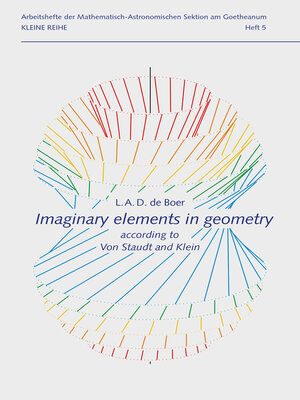Imaginary elements in geometry
ebook ∣ according to Von Staudt and Klein · Arbeitshefte der Mathematisch-Astronomischen Sektion
By L.A.D. de Boer

Sign up to save your library
With an OverDrive account, you can save your favorite libraries for at-a-glance information about availability. Find out more about OverDrive accounts.
Find this title in Libby, the library reading app by OverDrive.



Search for a digital library with this title
Title found at these libraries:
| Library Name | Distance |
|---|---|
| Loading... |
A remarkable fact in mathematics is the accordance between algebra and geometry: since the time of Descartes it is possible to express geometric phenomena in terms of numbers. And after doing calculations with these numbers, we can draw geometric conclusions from them. However, soon it appeared that, for instance, a circle and a line outside that circle have 'imaginary' meeting points: points that have imaginary coordinates but can not be found in the figure. Karl von Staudt found a brilliant way to visualize imaginary geometric points, lines and planes, and Felix Klein simplified and extended his method. In this book imaginary elements appear as Klein-movements in our real space. Apart from its mathematical importance, these movements may be seen as an alternative for the remarkable occurrences of complex numbers in physics, viz. quantum physics.







